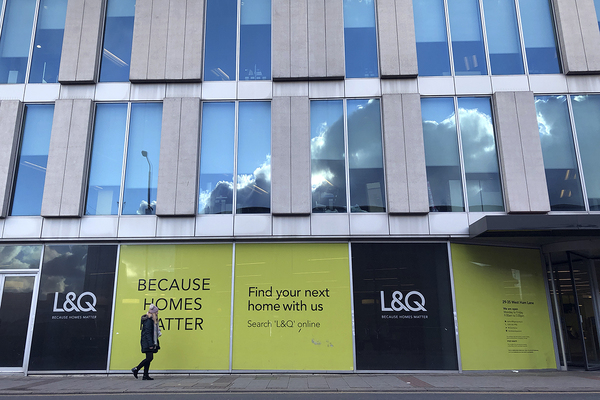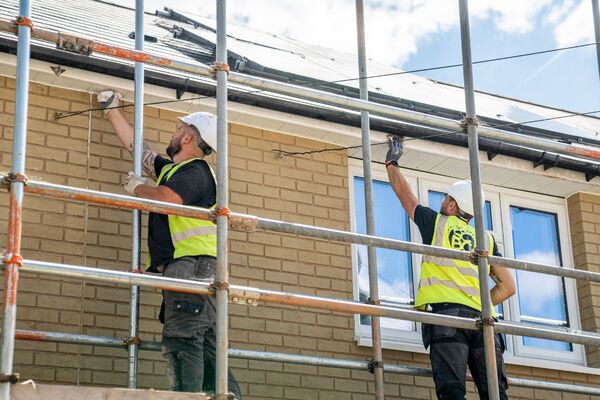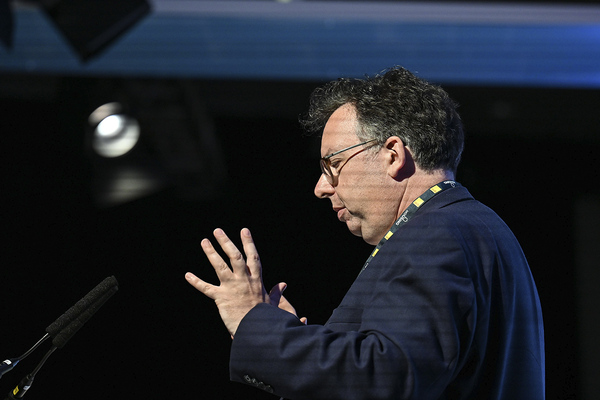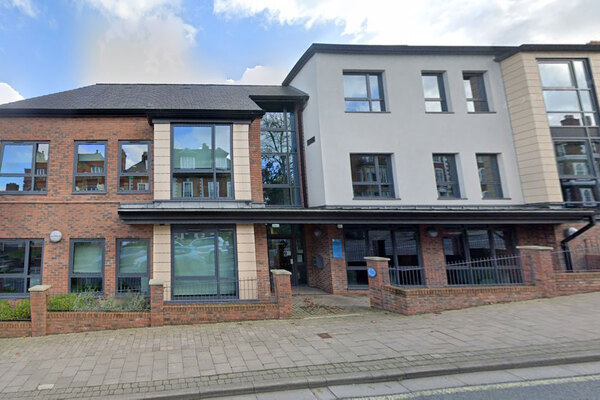You are viewing 1 of your 1 free articles
Know the fire drill
The results of the Inside Housing and Nulogic fire safety survey are in, and the results may shock. Alex Turner analyses the findings
It’s now more than a year since the coroner’s inquests into the 2009 tower block blaze at Lakanal House, Southwark, in which six people lost their lives, concluded.
The tragedy exposed both physical and procedural shortcomings with grave implications for the social housing sector. Soon after the inquest, Inside Housing and fire safety consultancy Nulogic surveyed the sector on fire safety and found that, four years after Lakanal, there was still much work to be done to safeguard the well-being of tenants and residents.
During the past few weeks, we’ve been repeating the exercise, in partnership with Nulogic. Across the UK, 314 housing professionals ranging from front line supported housing staff to directors responded - and some of their troubling reading.
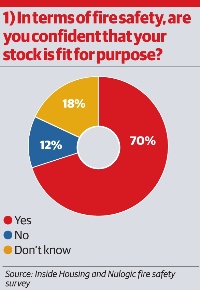
Put bluntly, the survey suggests a sense of stasis has fallen across the sector. In reply to six key questions relating to confidence in potentially life-or-death fire safety factors, an average 30 per cent of professionals express uncertainty. Many of those figures show only marginal improvement on last year’s results - and in some cases they have regressed.
Lacking confidence
For example, while it’s good news that 70 per cent of our survey group state they’re confident their stock is fit for purpose in relation to fire safety, 3 per cent up on last year - that still leaves just under a third saying they’re not confident (12 per cent) or are unsure (18 per cent).
We also asked whether professionals are confident they fully understand their roles and responsibilities under the Regulatory Reform (Fire Safety) Order 2005. These stipulate that a ‘responsible person’ must act to ensure the safety of building segments such as communal areas in tower blocks, and that ‘suitable and sufficient’ risk assessments must be carried out on such buildings and kept up-to-date.
Again, 70 per cent of respondents say they’re confident - but this is actually 12 per cent fewer than the group surveyed last year. Eight per cent say they’re not confident; 21 per cent are unsure.
The figures relating to the implementation of crucial risk assessments and whether they’ve been kept up-to-date are similar - in each case approximately a third of our survey group admit to doubt.
‘It’s great to see that confidence about fire safety generally is up on last year, but worrying to see that confidence in suitability of fire risk assessments and the compliance of assessors is down significantly,’ says Philip Cunningham, managing director of Nulogic.
‘The housing industry needs to think hard about how it addresses those issues.’
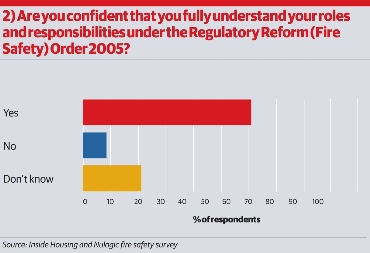
The area that, on the face of it, is most acutely unsettling, relates to compartmentation - the division of buildings into fire-tight zones that will inhibit the spread of smoke, heat and toxic gases. Just 47 per cent of professionals answering our survey say they’re confident that compartmentation has been maintained in their flats, and fire-stopping measures have been completed, by contractors working in their stock.
That’s a 7 per cent improvement on last year’s survey. Yet, given that some of those who say they’re not confident, or are unsure, work for organisations employing a ‘stay put and await advice’ policy in their high-rises in the event of fire, it sets alarm bells jangling. Poor compartmentation - exacerbated by work carried out by contractors - proved devastating during the Lakanal House tragedy.
‘The improvement is negligible,’ says Jan Taranczuk, vice chair of the Chartered Institute of Housing London regional board and a fire safety consultant.
Updating stock
Others we speak to, however, point out that compartmentation is a fiendishly complex area - and that it’s not just about safety in high-rises. Rachel Bancroft, health and safety manager at 27,000-home Southern Housing Group, explains that while her organisation has about 40 tower blocks, its stock includes homes dating back 100 years, some of it formerly belonging to local authorities and other housing associations, as well as sheltered schemes and supported accommodation.
‘It’s old stock [that causes most of the uncertainty],’ she explains. ‘Some was updated in the 1960s when lots of conversion took place - lots of stock in Brighton that the local authority deemed to be a house of multiple occupancy. Where there’s been work that we’re not confident of - more along the lines of older work, not current - we’ve since given clear guidance to our contractors.’

Ms Bancroft says that for landlords in SHG’s position, managing compartmentation is a continual process in which it’s better to err on the side of caution than to state absolute confidence. This means carrying out intrusive surveys to high-risk properties, programming in remedial work where possible and ensuring that where there are doubts, policies of evacuation - or phased evacuation in case of fire via different alarms - are firmly in place.
Her outlook is echoed by Robert Groom, chair of the London and south east social housing fire safety group, and fire safety and emergency planning manager for Peabody Trust.
‘[Across the sector] compartmentation is a huge challenge,’ he says. ‘You have to recognise the implications and prioritise risks as to what you feel is most appropriate - for lots of authorities that’s ensuring common parts are compliant with legislation, having a robust evacuation policy [where there are any doubts], then as opportunities allow complete compartmentation works.’
Peabody now requires anyone working in its properties to complete a tick-box questionnaire confirming the integrity of fire stopping once their job is completed. ‘Even in a new build,’ warns Mr Groom, ‘you can have a perfect handover and then the first time a plumber goes in they can knock a hole in an internal riser.’
Mr Groom is one of several people we interview in the wake of the survey who point to the crucial importance of having competent in-house staff, either to carry out risk assessments themselves or to judge the quality of external assessments and work carried out by contractors. It’s telling that, of the 33 per cent of respondents who have in-house risk assessment staff, more than 90 per cent (as opposed to 70 per cent overall) pronounce themselves confident in their assessors’ competency.

‘We have found an in-house approach allows for a more reasoned approach and more detailed control,’ explains Larry Patrick, director of property services for 13,500-home, Manchester-based arm’s-length management organisation Northwards Housing, which has around 350 blocks of flats, including 20 high-rises. ‘It also improves our development of action plans.’
Passing the buck
Nick Cross is head of housing for Southampton Council, where the Shirley Towers blaze in 2010 killed two firefighters and prompted recommendations regarding equipping tower blocks with sprinklers (see box, page 24: Trickle-down effect). He’s all too familiar with the importance of safety - and says that, where work is contracted out, there can still be a lack of clarity about where the buck stops.
‘The Chartered Institute of Housing ran a session last summer,’ he recalls, ‘where there was lots of conversation around managing refurbishment programmes - you write things in a contract but they don’t always get done. It’s a worry that you give works to contractors but you’re still ultimately responsible.
‘But it was also a concern at another session, where people were saying, “If you outsource the contract, you outsource risk and responsibility”,’ he adds. ‘That’s not the case. You can’t just put it to one side.’
It’s a theme that’s picked up on by Mark Andrews, deputy assistant commissioner for the London Fire Brigade. Within the capital, the national trends identified by our survey broadly cohere - indeed, on a number of counts they’re marginally less positive - perhaps owing to the greater diversity of stock in such a large urban area.
Mr Andrews believes the slightly murky overall picture should come as no surprise.
‘Like any sector, you’ll have major players - the bigger social landlords - who have the time, resources and know-how to apply legislation in a balanced way,’ he says. ‘But a large number of purpose-built flats will be provided by smaller landlords.
‘There’s a raft of legislative factors they need to be mindful of - where does fire safety feature on that list of priorities?’ he asks. ‘All too often, it’s not high enough up. We need to work collaboratively but, let’s be clear, the responsibility lies with the landlords.’

Mr Andrews says that, while progress has been made, the LFB still encounters ‘too many’ incidents in flats where tenants are uncertain whether to evacuate or not - and a LFB-commissioned study published in March found that 60 per cent of high-rise residents had no fire escape plan. This chimes with another perturbing statistic from our survey: around a fifth of respondents admit they don’t know their organisation’s advice policy to tower block tenants in the event of a fire.
Avoiding complacency
It’s with these factors in mind that the LFB recently launched its year-long ‘Know the plan’ campaign and website, aimed at increasing fire safety awareness among landlords and tenants alike - and Mr Andrews, Mr Groom and Mr Cross all speak positively about furthering collaborative work between fire and housing professionals.
Mr Taranczuk is one of those backing the roll-out of such work. Our survey results, he cautions, show that there’s never a time when anyone in the social housing sector can afford to be complacent about fire.
‘We always need to remember that fire safety is a process, not an event,’ he says. ‘You can’t just do it this week and then say we’ve done it. You have to continually remind people how important it is.’
Trickle-down effect
Retrofitting sprinkler systems in tower blocks - a rule 43 recommendation by the coroner’s report following the 2010 fatal Shirley Towers fire in Southampton - is something that’s having a mixed take-up across UK social housing. Rule 43 letters make compulsory recommendations to the government about how to avoid preventable deaths. In this case the government has not made calls for landlords to retrofit sprinkler systems.
Just over half (53 per cent) of our survey respondents say there are no plans to put sprinklers in any of their housing stock. Nineteen per cent have already fitted them everywhere they plan to, 11 per cent will install them this year and 17 per cent plan to in the future.
‘[The] rule 43 says landlords should consider retrofitting buildings over 30 metres in height or where there’s a complexity that makes treating fires difficult,’ explains Southampton Council’s Nick Cross.
‘We’ve got a proposal to look at whether it’s feasible to fit in our three scissor blocks. We’ve considered it… guided by the fire service: it’s not all our tower blocks - it’s the ones they say are priority.’
Of those with no plans to fit sprinklers, a large minority (46 per cent) cite excessive cost or the need to prioritise investment in stock elsewhere. As reported in Inside Housing earlier this year, a pilot scheme in a tower block on Sheffield’s Gleadless Valley estate found the combined cost of installation and maintenance was £40 per flat per year over a 30-year timeframe.
But Larry Patrick of Northwards Housing, which has retrofitted one of its high-rises, warns landlords need to time such investment with care.
‘There are no immediate plans to install sprinkler systems in our remaining multis,’ he explains. ‘Sprinkler installation at the time of capital works is a good idea, but we are at the tail end of a programme of capital improvements, so such improvements are not considered viable at this time.
‘We are, however, working with our local fire service to develop a joint-funded and risk-based approach to target vulnerable residents at specific fire risk over our entire housing stock, with a view to retrofit sprinkler systems. That more targeted approach offers better value for money.’






